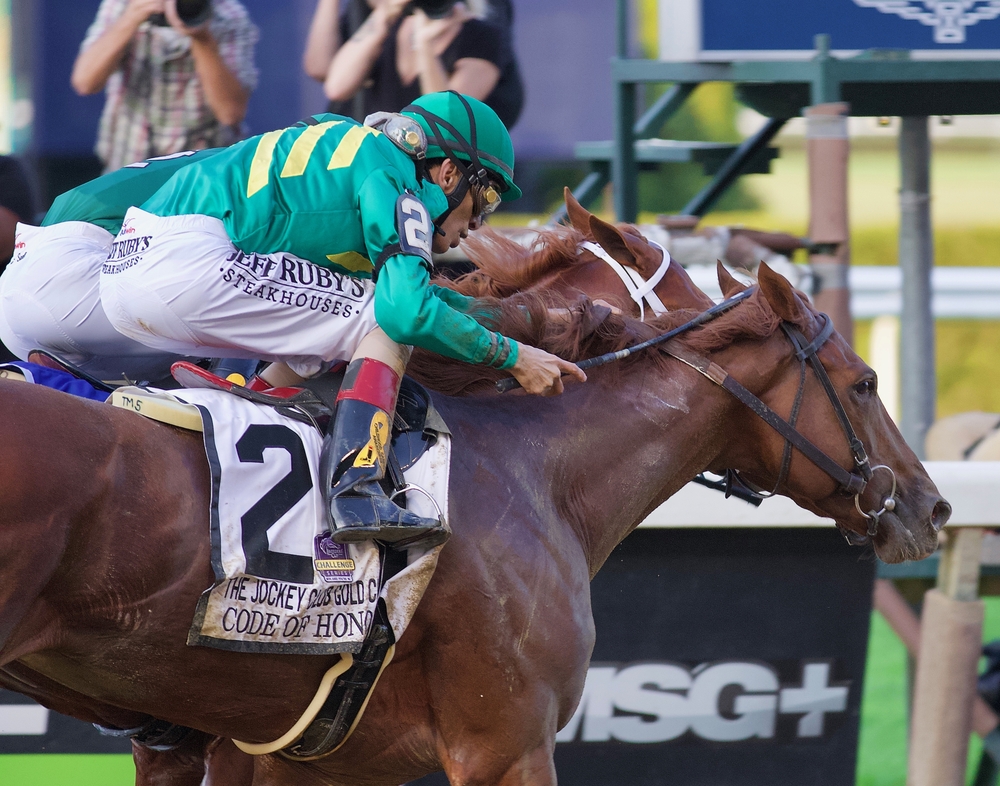When it comes to sports betting, a parlay bet is one of the most exciting options available to bettors. A parlay combines multiple individual wagers into a single bet, increasing the potential payout as the risk escalates with each added leg of the bet. To calculate the potential payout for a parlay, you need to understand the odds for each individual leg and how they cumulatively affect the overall return.
The potential payout of a parlay bet is determined by multiplying the odds of all the selections within the parlay. If the parlay contains different types of odds—such as American, decimal, or fractional—these must first be converted to a common format. After calculating the combined odds, multiply the total odds by the amount wagered to arrive at the potential payout. It’s important to consider that all selections within a parlay must win for the bet to payout; even one incorrect wager results in the entire parlay being lost.
Key Takeaways
- Parlay bets combine multiple wagers, increasing potential payout.
- All selections within the parlay must win to secure a payout.
- Potential payouts are calculated by multiplying the combined odds by the stake.
Understanding Parlay Betting
Parlay betting allows bettors to combine multiple wagers into a single bet to potentially increase their payout. It’s a popular strategy in sports betting due to the high reward possibilities.
Definition of a Parlay
A parlay bet involves linking two or more individual wagers into one larger bet. It is contingent on all those wagers winning together. If any of the legs of the parlay fail, the entire parlay is considered a loss. Bettors choose parlays to combine multiple bets on different games or events in sports.
Advantages of Parlay Betting
One of the main advantages of parlay betting in sports is the potential for a higher payout with a smaller investment. Since the odds for each leg are multiplied together, the more legs added, the greater the potential payout.
Risks of Parlay Betting
The risks associated with parlay betting are significant. The primary risk is that the failure of just one leg results in the loss of the entire bet. This makes achieving a successful parlay more challenging than winning a series of single bets. Thus, while the payouts are higher, so is the difficulty of achieving a win.
Types of Odds Explained
Calculating the potential payout for a parlay bet involves understanding the different types of odds used in sports betting. Each format presents the likelihood of an outcome in a distinct manner, requiring specific calculations to determine payouts.
American Odds
American odds are displayed as either a positive or negative number and are based on a bet of $100. Positive numbers indicate the amount one would win on a $100 bet, whereas negative numbers show how much one needs to bet to win $100. For example, +150 means a $100 bet would return $150 in profit, while -150 indicates one must bet $150 to win $100.
Decimal Odds
Decimal odds represent the total payout, not just the profit, for every unit of money wagered. To calculate the payout, one simply multiplies the stake by the decimal odds provided. For instance, odds of 2.50 mean that for every $1 wagered, the total return would be $2.50, which includes the $1 wager plus $1.50 in profit.
Fractional Odds
Fractional odds are commonly found in the UK and express the profit relative to the stake. The format is displayed as a fraction—such as 3/1 or 5/2—indicating the profit earned for every unit staked. To calculate the payout, one adds the stake to the product of the stake and the fraction. For a bet with 3/1 odds, one would win $3 for every $1 staked, for a total payout of $4 when including the original stake.
Calculating Potential Payouts
Calculating the potential payout of a parlay bet involves understanding the combined odds of the bet selections and how they affect the overall return. This section breaks down the key methods to determine the potential payout from a parlay wager.
Using a Parlay Calculator
To quickly calculate the potential payout for a parlay bet, one can use a parlay calculator provided by a sportsbook or an independent betting site. Bettors simply input their bet amount and the odds for each leg of the parlay, typically provided in American, decimal, or fractional formats. The calculator will then display the total payout, which includes the original stake plus winnings.
Example:
- Stake: $50
- Legs: 3
- Odds: American (+150, +200, +250)
The parlay calculator will compute the payout automatically.
Manual Calculation for Parlay Payout
For those who prefer to understand the math behind their potential winnings, calculating payouts manually is also an option. To do so, one must convert American odds to decimal format if necessary, multiply the decimal odds of all selections together, and then multiply the total by the original stake to get the potential payout.
Steps:
- Convert odds to decimal format (if they’re in American or fractional format).
- American Odds (+200): (200/100) + 1 = 3.00
- Fractional Odds (2/1): (2/1) + 1 = 3.00
- Multiply the decimal odds of all selections.
- Multiply the resulting total by the original stake.
Example:
- Stake: $50
- Odds (in decimal format): 3.00, 4.00, 5.00
Calculation:
$50 (stake) * 3.00 * 4.00 * 5.00 = $3,000 (potential payout)
Understanding Over/Under Totals in Payouts
In parlay betting, understanding over/under totals is crucial as it represents another type of wager that can affect the payout. The over/under is a bet on whether the total combined score of a game will be over or under a sportsbook’s specified total. These totals are incorporated into the parlay just like any other odds and can influence the payout based on their implied probability. The calculation method for including over/under totals remains the same as for standard betting odds.
Strategic Considerations
When crafting a parlay bet strategy, one must consider the management of their bankroll, wisely select events, and diligently shop for the best lines—all vital to maximizing potential winnings and making informed decisions in the sports betting landscape.
Bankroll Management
Effective bankroll management is critical in parlay betting to mitigate risks and prolong one’s betting endeavors. Bettors should allocate only a small portion of their bankroll to parlays due to the higher risk involved. For instance, a common guideline is to risk no more than 1-2% of the total bankroll on a single parlay, ensuring that one bad outcome doesn’t significantly impact their overall financial position.
Selection of Events
Punters should strategically select events with a more profound knowledge of the sports, teams, and types of bets such as point spreads, totals, and money lines. It is recommended that they avoid randomly adding legs to a parlay merely for higher payouts. Instead, each selected event should have been researched thoroughly and chosen for its perceived value and likelihood to succeed. A bettor’s knowledge of a specific sport can be an asset in identifying mispriced spreads or events.
Importance of Shopping for the Best Lines
Different sportsbooks may offer varying odds for the same events. To capitalize on a parlay bet, one should shop across multiple betting sites to find the most favorable lines. For example, gaining just a few more points on a spread or a few dollars on the odds may significantly increase the potential winnings of a parlay bet. The odds could vary enough to turn a break-even parlay into a value bet, so an astute bettor always compares the offerings at various sportsbooks before placing their wager.
Parlay Betting Examples
Calculating potential payouts for parlay bets involves understanding the aggregate odds and potential returns from combining multiple bets. Parlay bets can significantly raise payouts because each individual bet, or leg, must win for the parlay to succeed.
Example of a Four-Team Parlay
In a four-team parlay, a bettor might choose four different games, such as two from the NFL and two from the NBA, and bet on the point spreads. Let’s assume the bettor places a wager amount of $100 on this parlay. The individual odds for the teams might be -110, +120, -105, and +110. To find the potential payout, one would calculate the combined odds and then multiply by the wager amount.
- NFL Game 1: -110
- NFL Game 2: +120
- NBA Game 1: -105
- NBA Game 2: +110
To calculate the combined odds, one converts the American odds to decimal odds and multiplies them together:
- -110 as decimal odds is 1.91
- +120 as decimal odds is 2.20
- -105 as decimal odds is 1.95
- +110 as decimal odds is 2.10
Now, multiply all the decimal odds: 1.91 × 2.20 × 1.95 × 2.10 = approximately 16.91. To find the payout, multiply the total odds by the wager amount: 16.91 × $100 = $1691. This means the payouts would be $1691 if all four teams win their games.
Example of a Six-Team Parlay
For a six-team parlay, the complexity increases as more teams are added. Suppose the bettor selects three NFL teams and three NBA teams, all with various point spreads and a wager amount of $50. If their respective odds are -110, +100, -150, +130, -120, and -130, one first converts these to decimal odds and then follows a similar multiplication process.
- NFL Game 1: -110
- NFL Game 2: +100
- NFL Game 3: -150
- NBA Game 1: +130
- NBA Game 2: -120
- NBA Game 3: -130
Conversion to decimal odds gives:
- -110 as decimal odds is 1.91
- +100 as decimal odds is 2.00
- -150 as decimal odds is 1.67
- +130 as decimal odds is 2.30
- -120 as decimal odds is 1.83
- -130 as decimal odds is 1.77
Multiplying the decimal odds together: 1.91 × 2.00 × 1.67 × 2.30 × 1.83 × 1.77 gives approximately 45.69 as the combined odds. The potential payout would be 45.69 × $50, amounting to $2284.50. The payouts are substantial but bear in mind that all six bets must win for the parlay bet to pay out.
Calculating Implied Probabilities
Calculating implied probabilities from American odds is a critical step in understanding potential payouts for parlay bets. This involves a conversion from the posted odds to a percentage that reflects the likelihood of an outcome.
From American Odds to Implied Probability
To convert American odds to an implied probability, one must use different formulas depending on whether the odds are positive or negative:
- For positive odds (e.g., +150): the formula is Implied Probability (%) = 100 / (American Odds + 100).
- For negative odds (e.g., -150): the formula is Implied Probability (%) = American Odds / (American Odds + 100).
Let’s apply these formulas to some practical examples:
| American Odds | Formula Used | Implied Probability (%) |
|---|---|---|
| +150 | 100 / (150 + 100) | 40.00% |
| -150 | -150 / (-150 + 100) | 60.00% |
The calculated implied probability reveals the perceived likelihood of an event happening according to the sportsbook.
Determining Payout Odds Based on Implied Probability
Once implied probabilities are calculated for each leg of the parlay, a bettor can determine the combined payout odds. The key here is that the implied probability of the entire parlay is the product of all the individual implied probabilities.
By multiplying these probabilities, the bettor arrives at the implied probability of the entire parlay winning. One then typically converts this combined implied probability back into American odds to understand the potential payout odds.
The lower the implied probability of the entire parlay, the higher the potential payout due to the increased risk involved with each added bet. Conversely, the higher the implied probability, indicating a more likely outcome, the lower the payout. To calculate the potential payout from the American odds, bettors can apply the original stake to the cumulative odds.
Understanding Ties and Pushes
When betting on parlays, it’s crucial to recognize how ties, or pushes, can alter the expected payout. The dynamics of a parlay bet change significantly with the occurrence of a push, as it impacts the number of total winning legs considered in the final calculation.
How Ties Affect Parlay Bets
In the context of parlay bets, a tie is the result of one of the games or outcomes landing exactly on the line set by the bookmakers. When this happens, the leg of the parlay linked to that event neither wins nor loses—it’s essentially a non-event. The critical aspect to remember is that this specific leg is removed from the parlay, which in turn reduces the total number of legs that count toward the potential payout. For a parlay to proceed, it must have at least two winning legs; therefore, a tie would adjust the parlay down to the next available number of legs.
Handling Push Scenarios in Parlays
When a push occurs:
- The parlay adjusts to exclude the pushing leg.
- The overall odds are recalculated based on the remaining legs.
- The potential payouts are consequently reduced.
A real-world example for clarity: If a bettor places a four-leg parlay and one leg pushes, the payout structure reverts to that of a three-leg parlay. All winning legs are still taken into account, and only the pushing leg is discounted. It’s crucial for bettors to comprehend this mechanism as it directly influences the reward of a parlay bet and is a standard rule across most sportsbooks.
High-Reward Betting Strategies
In the realm of sports betting, high-reward strategies often involve knowledgeably leveraging odds for optimal payout potential. Understanding the mechanics of moneyline and point spread can dramatically affect the payout of parlay bets.
Utilizing Moneyline Odds for Larger Payouts
Moneyline odds are an essential aspect of parlay betting that can significantly increase the potential reward. Bettors select the outright winner of each event, disregarding the point spread. Underdogs typically have positive moneyline odds, meaning a lower stake can lead to a larger payout if the bet proves successful. Conversely, favorites have negative moneyline odds and require a higher stake to achieve substantial wins. In a parlay bet, combining multiple underdog victories can escalate the payout because the odds multiply with each added selection.
Leveraging Point Spread for Parlay Bets
The point spread is a betting mechanism that handicaps the favorite team, making the betting outcome more balanced. A successful betting strategy involves selecting teams that a bettor believes will beat the spread, not just win the game. For instance, if a team is listed as a -5.5 favorite, that team must win by 6 points or more for the bet to win. Parlay bets magnify this effect: if a bettor accurately predicts multiple games against the spread, their overall payout escalates due to the compounded odds. Using the point spread, bettors can capitalize on small edges in each game to aspire for higher cumulative rewards.
Factors Influencing Parlay Payout
The potential payout for a parlay bet depends on several key elements: the amount wagered, the odds provided for each selection within the parlay, and the variability of those odds. Understanding each factor is crucial for calculating the anticipated return from a parlay.
Impact of Bet Amount on Payout
The bet amount is the foundation for calculating the potential payout of a parlay. The more one invests, the higher the prospective profit. Here’s the simple calculation:
- Initial Bet Amount * Total Combined Odds = Potential Payout
For instance, a $10 wager on a parlay at combined odds of 5.0 would yield a potential payout of $50.
Role of Odds in Potential Payout
The odds attached to each selection in a parlay are integral to determining the potential payout. Parlays combine the odds of each individual selection, compounding the risk and reward. Parlay bets typically use American odds, but decimal odds are easier for calculating payouts as follows:
- Selection 1 (2.0) x Selection 2 (1.5) x Bet Amount = Potential Payout
Each selection’s odds increase the overall payout as they multiply together.
Effect of Selection Odds Variability
Variable odds among the selections in a parlay can significantly affect potential payouts. A parlay with selections that have high odds will yield a higher potential payout due to higher risk, as opposed to a parlay with more conservative odds. However, a single selection at lower odds can still affect the total payout. Bettors should note that adding more selections increases both the potential payout and the risk, as all selections must win for the parlay to be successful.
Choosing the Right Betting Platform
When calculating the potential payout for a parlay bet, the choice of betting platform directly impacts the payout one can expect. Bettors should consider the parlay odds offered, and the tools available to them for calculation and comparison.
Comparing Parlay Odds Across Sportsbooks
Different sportsbooks, including prominent names like BetMGM, often offer varying parlay odds for the same events. When looking for the best potential payout, a bettor should:
- Compare parlay odds across multiple sportsbooks: Check the offered odds for each leg of the parlay on various platforms.
- Assess the markets: Look at different betting markets, and don’t overlook futures which can sometimes offer value.
A systematic comparison can lead to a more informed decision, potentially offering a higher payout if a bettor finds a sportsbook with more favorable odds.
Benefits of Online Parlay Calculators
An online parlay calculator is an indispensable tool for bettors, and here’s why:
- Efficiency: Quickly calculates the potential payout of a parlay bet without manual error.
- Convenience: Easily accessible, usually provided by sportsbooks on the betting slip or as a feature on their website.
Using a parlay calculator can help one understand the exact payout to expect from a parlay bet without having to compute the compounded odds manually. Bettors can enter the odds in either American, decimal, or fractional format to see the combined payout, ensuring a clear and transparent betting process.
Common Mistakes and Misconceptions
Calculating the potential payout for a parlay bet can be complex. Bettors often fall into the trap of misinterpreting odds and overestimating their winning potential, which can lead to miscalculations and misguided expectations.
Misinterpreting Odds and Payouts
The process of converting American odds to decimal odds is critical in calculating parlay odds. A common mistake sports bettors make is misinterpreting these odds, especially when they encounter both positive (+) and negative (-) American odds within the same parlay. They might not realize that for favorites (indicated by a minus sign, e.g., -150), the odds represent the amount that must be wagered to win $100, whereas for underdogs (indicated by a plus sign, e.g., +200), the odds signify the payout received from a $100 bet.
For clarity, the conversion from American odds to decimal odds is as follows:
- For favorites:
- Decimal odds = (100 / absolute value of American odds) + 1
- For underdogs:
- Decimal odds = (American odds / 100) + 1
It’s important that bettors corroborate the converted decimal odds before proceeding with the multiplication step to determine the payout.
Overestimating Winning Potential
Bettors often overestimate the potential return on a parlay bet, not fully appreciating the difficulty of hitting multiple outcomes successfully. The expected value (EV) of a parlay is often negative, because while the payouts are high relative to the stake, the chances of winning decrease exponentially with each added bet. Unlike a straight bet where one evaluates a single probability, parlays require every individual bet (or “leg”) to win for the parlay to pay out.
To help manage expectations, bettors should consider:
- The true probability of winning each leg of the parlay.
- That each added leg significantly reduces the likelihood of the entire parlay winning.
- Parlays tend to have lower EV compared to individual bets.
By understanding the intricacies involved in parlay betting and realizing the high-risk nature of these wagers, sports bettors can make more informed decisions.
Frequently Asked Questions
Calculating the potential payout for a parlay bet involves several considerations, and bettors often rely on tools such as parlay calculators. These FAQs aim to demystify the process and provide clear, actionable information.
What factors must be considered when calculating a parlay bet payout?
To calculate a parlay bet payout, one must consider the odds for each selection within the parlay, the number of games or events included, and the amount wagered. The combined odds determine the potential payout, with higher combined odds reflecting a higher-risk bet.
How can one use a parlay calculator to determine possible winnings?
A parlay calculator streamlines the process by automating the computation of payouts. Bettors input their stake along with the odds for each selection within the parlay, and the calculator multiplies the decimal or converted odds together, then multiplies the total by the stake amount to show the potential winnings.
What is the method for calculating payouts for a parlay involving multiple teams?
The method for calculating payouts on a multiple team parlay bet involves multiplying the decimal odds of each team’s winning chances. One multiplies the individual odds for all selections together to get the total odds, which is then multiplied by the stake to calculate the potential payout.
How does a bettor determine the implied odds of a winning parlay?
A bettor determines the implied odds by first converting the given odds to their decimal form and then multiplying these together. The product reflects the combined odds of all selections winning, which one can compare against the probability to ascertain the implied odds.
What is the general formula for estimating the return on a parlay bet?
The general formula for a parlay bet is to multiply the decimal odds of each selection in the parlay and then multiply this figure by the bettor’s stake. The result provides an estimate of the total return, including the original stake, should all selections win.
Can you provide an example of a parlay bet payout calculation for a set stake?
Suppose a bettor places a $100 parlay bet on three events with decimal odds of 2.0, 1.5, and 1.8. The calculation would be 2.0 x 1.5 x 1.8 x $100, equating to a payout of $540 if all three selections win. This payout includes the return of the original $100 stake.





